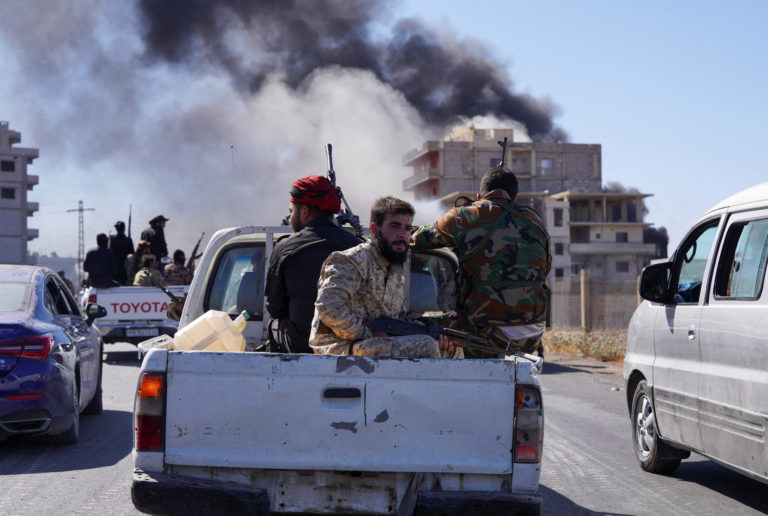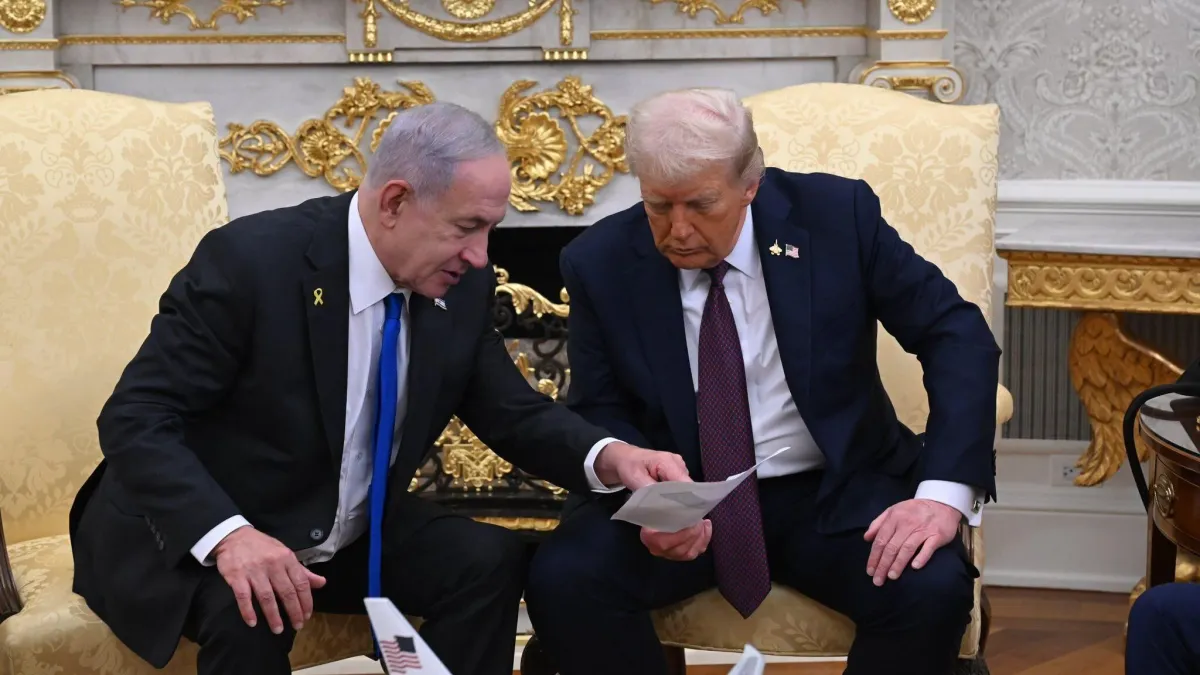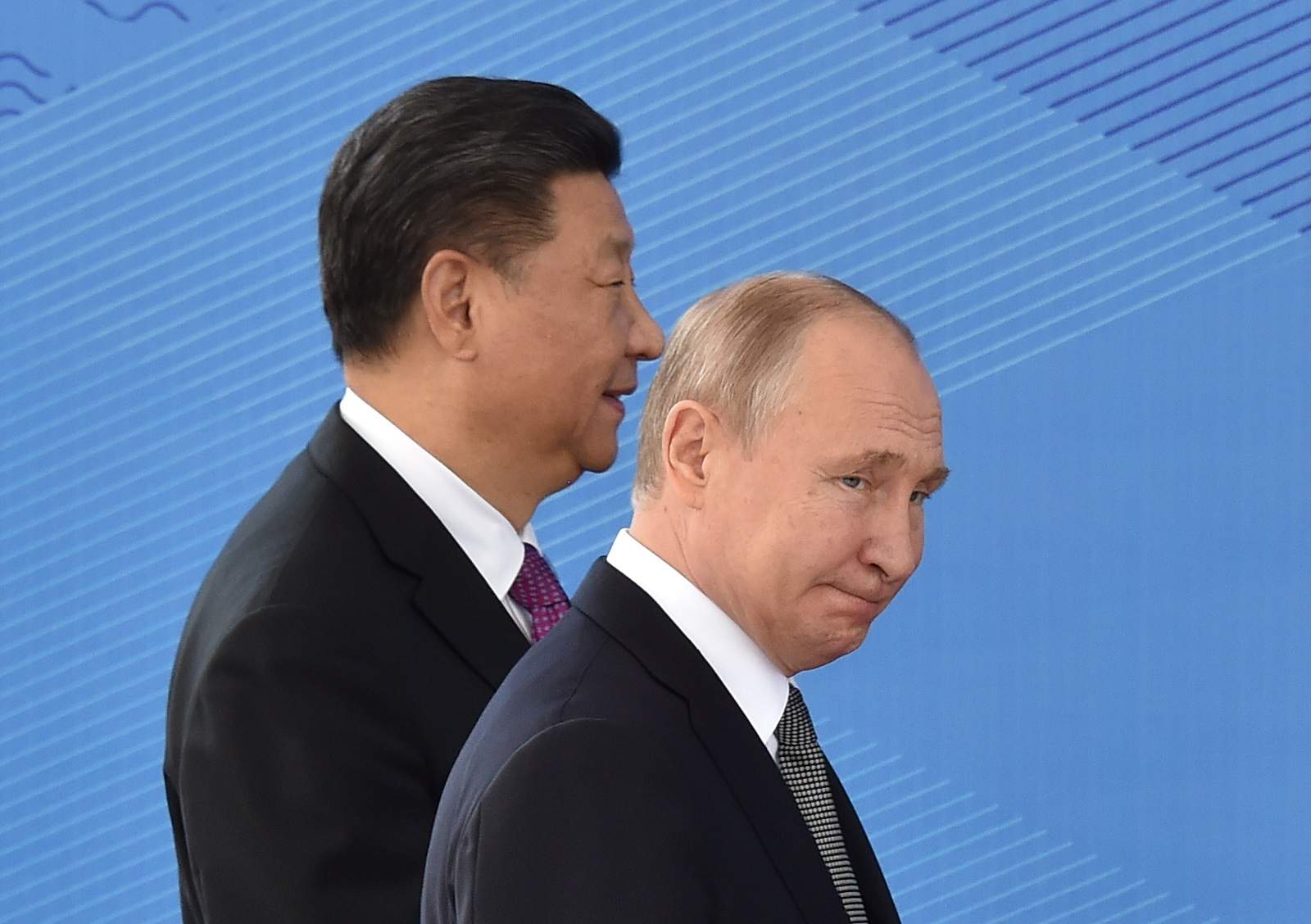By Nicolas Zupardo Dutra and Cinthya Araújo*
The Herculean Challenge of Syrian Reconstruction
Although Bashar Al-Assad’s fall on December 8, 2024, generated cautious optimism about the country’s future, this wave of cautious optimism has been gradually undermined by myriad internal challenges, including territorial fragmentation, foreign presence, massive economic and humanitarian crisis, sectarian tensions, particularly after the massacres against Alawite populations in coastal areas, and the lack of an inclusive and democratic political transition phase. All these processes have had a negative impact on any emerging potential for economic recovery and reconstruction, which the country desperately needs. A simple glance at Syria reveals the scale of the problem facing the country.
The Syrian Civil War can easily be considered one of the most destructive conflicts of the last 30 years in the Middle East, leaving a trail of devastation that has even spread beyond Syria’s borders. Although there have been positive signs of recovery in Syria in recent months, such as the gradual return of around one million Syrians to the country since last December and around 1.8 million internally displaced persons returning to their areas of origin, this still represents less than a quarter of the 4.7 million Syrian refugees and 7 million internally displaced persons who, in August this year, were still living in precarious conditions as a result of years of brutal conflict, according to a report by the UNHCR (United Nations High Commissioner for Refugees) released in early September. And this is just one aspect of the destruction caused by this conflict. When examining the economic situation of the Syrian population, it is clear that today around 90% live below the poverty line and, in 2024, 16.7 million people in Syria (or 75% of the population) will be in need of humanitarian assistance, according to the United Nations. Therefore, any effort to effectively overcome this profound humanitarian catastrophe must necessarily involve a massive effort mobilizing resources beyond the current capacity of the Syrian state, with estimates from organizations such as the the World Bank mentioning modest expenditures in the range of $200 billion for the effective reconstruction of the country.
It is within this perspective that international financial assistance comes into play, which is essential for the country to settle its vast population of refugees and displaced persons and revitalize its economy. However, there are challenges inherent in the flow of international assistance to a country with fragile institutions, such as corruption and the encouragement of commercial and speculative dynamics, as demonstrated, for example, by the resale of Saudi humanitarian aid on the Syrian black market at the beginning of the year. In this sense, it is possible to observe that there are deep and structural obstacles to any potential reconstruction attempt, which go beyond those mentioned above, notably the hyperinflation of the Syrian pound, the erosion of the private sector in the country, the dependence on remittances from the Syrian diaspora, and the complete lack of foreign investment since 2011.
In addition, it is worth mentioning that there are doubts surrounding the economic orientation and decisions of the new Syrian government, headed by Ahmed Al-Sharaa, which has a strong liberal character. These concerns stem from an ambitious privatization program carried out in recent months, seeking to attract foreign investment to various aspects of Syrian infrastructure, such as airports, ports, and roads, as well as the announcement of austerity measures, with the Syrian government reducing or effectively ending subsidies on items such as bread, gas, and electricity and announcing the dismissal of about a quarter of the country’s civil servants, claiming that most of them were receiving salaries without actually working. Although these measures are somewhat justified by the widespread insolvency of Syrian state finances, it is important to note that they have sparked protests in various regions of the country, also motivated by economic difficulties in the country within this context of reconstruction.
Syria therefore faces complex socioeconomic challenges that require urgent action. Addressing social and economic issues is therefore essential to improving living conditions and the population’s ability to participate in political life during the country’s transition. However, the new government’s political and economic orientation, characterized by a willingness to pursue greater liberalization, privatization, austerity, and subsidy cuts, warrants careful examination due to its potential to generate social inequality, impoverishment, and concentration of wealth in the hands of a minority, factors that were central to the 2011 uprising.
Tensions in the restructuring of the Syrian state apparatus
Within this perspective of Syrian reconstruction, another point of tension within the country today is its political restructuring at the hands of interim president Ahmed Al-Sharaa, who is promoting the reformulation of the Constitution and the restructuring of most Syrian state institutions. This process has resulted in the formation of the current Syrian Transitional Government, which has favored a concentration of power in the hands of the executive branch and, more specifically, Ahmed Al-Sharaa himself. This assertion can be made by observing the broad powers granted to him under the new Syrian constitution, in which the interim president is given considerable powers throughout the transition period. These include the authority to declare a state of emergency and to appoint one-third of the transitional legislature, with the remaining members being selected through elections administered by a commission appointed by the president. While this structure does ensure a degree of institutional continuity and central coordination, it raises questions about checks and balances, especially given the history of executive dominance in Syria.
This concentration of power may raise concerns about strengthening hierarchical decision-making rather than promoting participatory governance. The transition framework lacks clear mechanisms to ensure that executive authority is progressively reduced as institutions stabilize. In addition, there are concerns surrounding minority rights, as despite the constitution formally committing to equality and non-discrimination, some minority groups have expressed concern about how these provisions will be implemented in practice. Kurdish political representatives, in particular, have criticized the transitional structure for preserving authoritarian structures in a new form. The Syrian Democratic Council described the declaration as insufficiently inclusive and pointed to the lack of guarantees for decentralized governance or representation of regional authorities. Ongoing intercommunal tensions and local unrest in various parts of the country also point to the fragility of national unity during this phase of transition and restructuring.
One example that allows us to visualize these tensions is the legislative elections for the Syrian People’s Assembly in October this year. Within the elections, 119 representatives were indirectly elected through electoral colleges, with elections postponed in three provinces, including Suweida, currently controlled by the Druze minority, Al-Hasakah, and Raqqa, controlled by the Kurdish-led Syrian Democratic Forces (SDF) due to political and security issues. On October 23, supplementary elections were held to fill three vacancies in the provinces of al-Hasakah and Raqqa, while, according to the Syrian state news agency SANA, the remaining seats in these provinces and in Suweida will remain open until “adequate political and security conditions are met for supplementary elections to be held,” with the remaining third of the Assembly seats being chosen directly by Ahmed Al-Sharaa. The elections resulted in a disproportionate representation of Sunni Muslims, with only 13% of the representatives elected on October 5 being women and members of minorities. This was even acknowledged by the Syrian government itself, amid criticism that the process may have been “rushed” and “shrouded in obscurity,” in addition to “last-minute changes to legal procedures and low public participation”, The spokesperson for the Higher Committee for the People’s Assembly Elections, Nawar Najmeh, acknowledged the “shortcomings” of the process, highlighting the “unsatisfactory” representation of women and Christians.
In summary, the process of political reconstruction in Syria under the leadership of Ahmed Al-Sharaa reveals a transition scenario marked by institutional tensions and challenges to democratization. Although constitutional reform and the creation of the Syrian Transitional Government represent efforts to reorganize the state, the concentration of powers in the executive branch, limitations on representation, and the exclusion of minorities highlight the persistence of centralizing practices. Thus, the success of this phase will depend on the government’s ability to promote effective mechanisms for balancing power, political inclusion, and strengthening participatory governance.
The latent Syrian conflict
The last aspect of Syrian reconstruction to be addressed is some of the challenges surrounding the new Syrian state reestablishing its control over the various armed factions currently present in its territory and restructuring its security sector. First, the main challenge for the Syrian government is the constellation of rival militias, groups loyal to the former Assad regime, and semi-autonomous security forces operating with varying degrees of freedom within the country, which forces the Syrian government to adopt a cautious stance toward them and encourage disarmament, demobilization, and reintegration (DDR) programs, with varying degrees of success. This broad constellation of armed groups translates into momentary and intense eruptions of violence, both among themselves and against forces associated with the Syrian Transitional Government.
Two recent examples are the clashes between Druze and Bedouin tribes in Suweida, marked by notable Israeli intervention, and the friction between militias associated with the Transitional Government and Arab and Kurdish militias in the northeast of the country. In the case of Suweida, the July 18 ceasefire remains in effect. Despite the ceasefire and a roadmap for resolving the crisis, resulting from discussions between the interim government of Syria, the US, and Jordan, tensions and instability in southern Syria persist, marked by outbreaks of violence between the various Druze militias trying to establish themselves as the dominant faction in the province, due to the Syrian government’s inability to intervene in the region.
In northeastern Syria, tensions exist over control of the territory by the Syrian Democratic Forces (SDF), a Kurdish-led group that controls most of the de facto autonomous territory in northeastern Syria. Despite significant recent advances, such as the announcement of a “preliminary agreement” on the integration of the SDF into the Syrian ministries of defense and interior, a key element of the negotiations between the two sides, sporadic clashes occur between both sides, hindering the integration process. Another central aspect that hinders this process is that the Syrian Democratic Forces (SDF) advocate for a secular and decentralized state and maintain that the transitional constitutional declaration does not represent Syria’s diversity and concentrates too much authority in the interim president.
In addition to these aspects, it is important to highlight the difficulties in structuring a coalition of militias united by a wide range of informal ties into a cohesive and structured national army, which is the challenge facing the Transitional Government. Among Kurdish militias associated with the SDF, jihadists, militias created by the Turks to intervene in the country, and foreign volunteers, there is an eclectic collection of ideologies, religions, and ethnicities that must be transformed into a cohesive force. However, as expected, challenges arise, with military forces associated with the Syrian Transitional Government, for example, launching raids against Egyptian and French jihadist groups within the country, aiming to eliminate groups with radical views that could damage relations with both countries. This attempt by the Syrian government to control this variety of armed groups depends simultaneously on silencing extremist groups that threaten its authority and gradually disarming more established groups, with a view to subsequent Syrian territorial unity.
Thus, it is clear that the reconstruction of Syria faces one of its greatest obstacles in consolidating state authority over a mosaic of fragmented and ideologically diverse armed groups. The Transitional Government’s inability to fully integrate these militias into a unified national structure not only compromises internal stability but also limits the country’s political and institutional progress. Thus, the success of the Syrian reconstruction process will depend, to a large extent, on the ability to promote reconciliation, disarmament, and political inclusion, transforming former hotbeds of conflict into pillars of a cohesive and functional state.
The future of Syria? Where are we headed?
In short, although post-Assad Syria has achieved significant progress, such as the brief stabilization of the country and the formation of a new government, it remains deeply marked by vulnerabilities and internal pressures. The Syrian Transitional Government still faces the challenge of proving its real capacity for governance and national stabilization, while delicately balancing its relations with rival powers and managing domestic tensions that threaten to erode the fragile progress achieved so far.
Syria’s trajectory will depend on a combination of factors, which, if properly brought together, could reveal the ability to transform this still fragile period into greater consolidation of its sovereignty and internal reconstruction. Eleven months ago, we ended our column on Syria on a hopeful note: “The Assad family’s rule has marked Syria’s history, and with the end of this chapter, the hope is that the next ones will be written with less bloodshed.” However, what we see in this revisitation is that the Syrian context is entering another phase, with a mix of new and old actors. In this sense, although Syria is indeed entering a historic crossroads, marked by possibilities and opportunities, it still faces significant uncertainties about its future.
*Nicolas Zupardo Dutra, undergraduate student in International Relations at the Federal University of Paraíba (UFPB), member of the Research Group on Strategic Studies and International Security (GEESI-UFPB).
This article is based on information obtained up to November 6, 2025.
References
https://www.securitycouncilreport.org/monthly-forecast/2025-11/syria-85.php
https://www.policycenter.ma/sites/default/files/2025-04/PB-22-25%20%28Bilal%20Mahli%29.pdf
https://carnegieendowment.org/middle-east/diwan/2025/10/syria-needs-a-reconstruction-plan?lang=en
https://news.un.org/en/story/2025/09/1165945
https://english.enabbaladi.net/archives/2025/10/syrias-new-army-challenges-of-uniting-opposites/amp
https://vizier.report/p/israel-pandoras-box-syria
https://www.middleeasteye.net/news/turkey-begins-training-syrian-forces-under-new-security-deal
https://www.jihadologyplus.com/p/every-known-position-in-the-new-syrian



